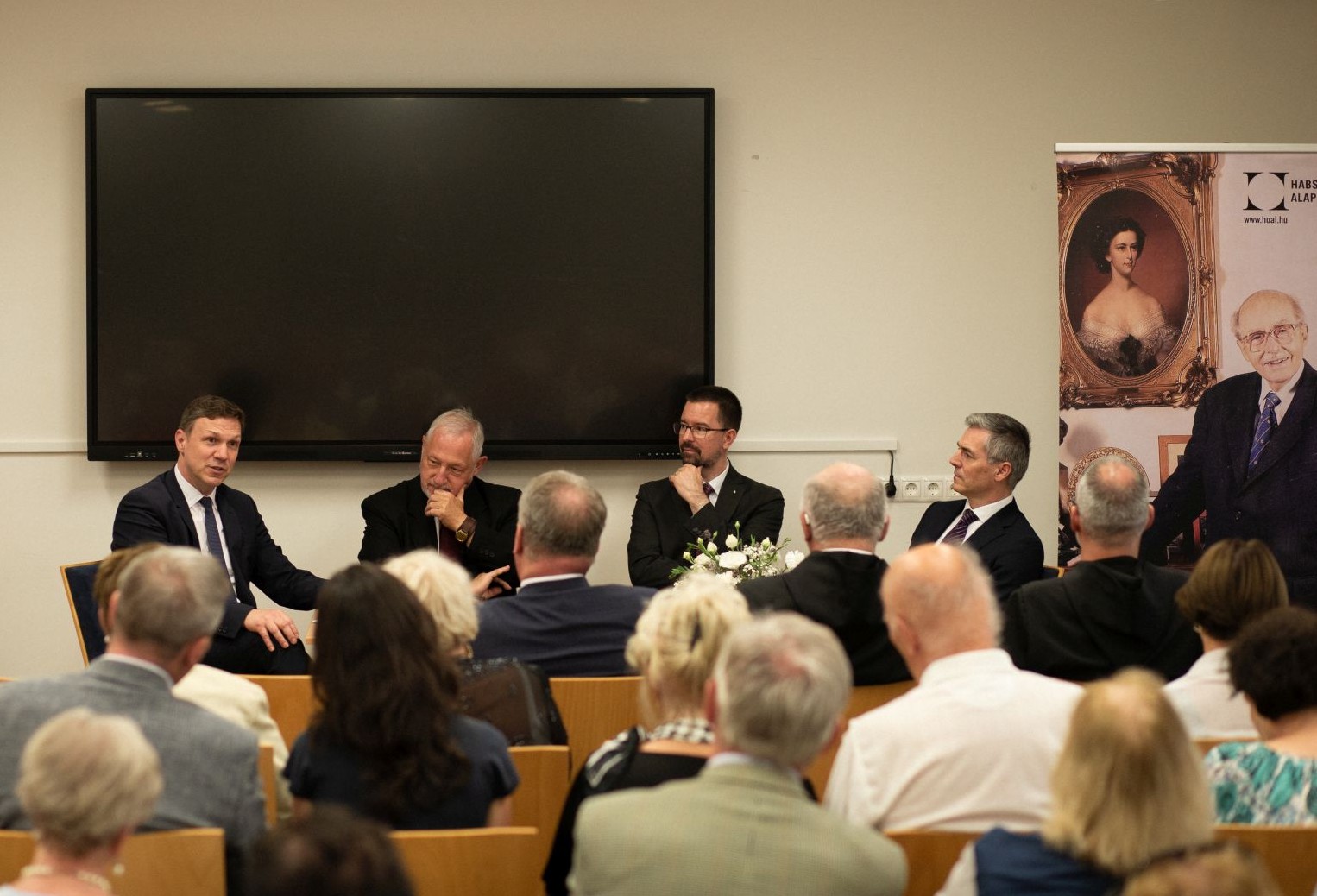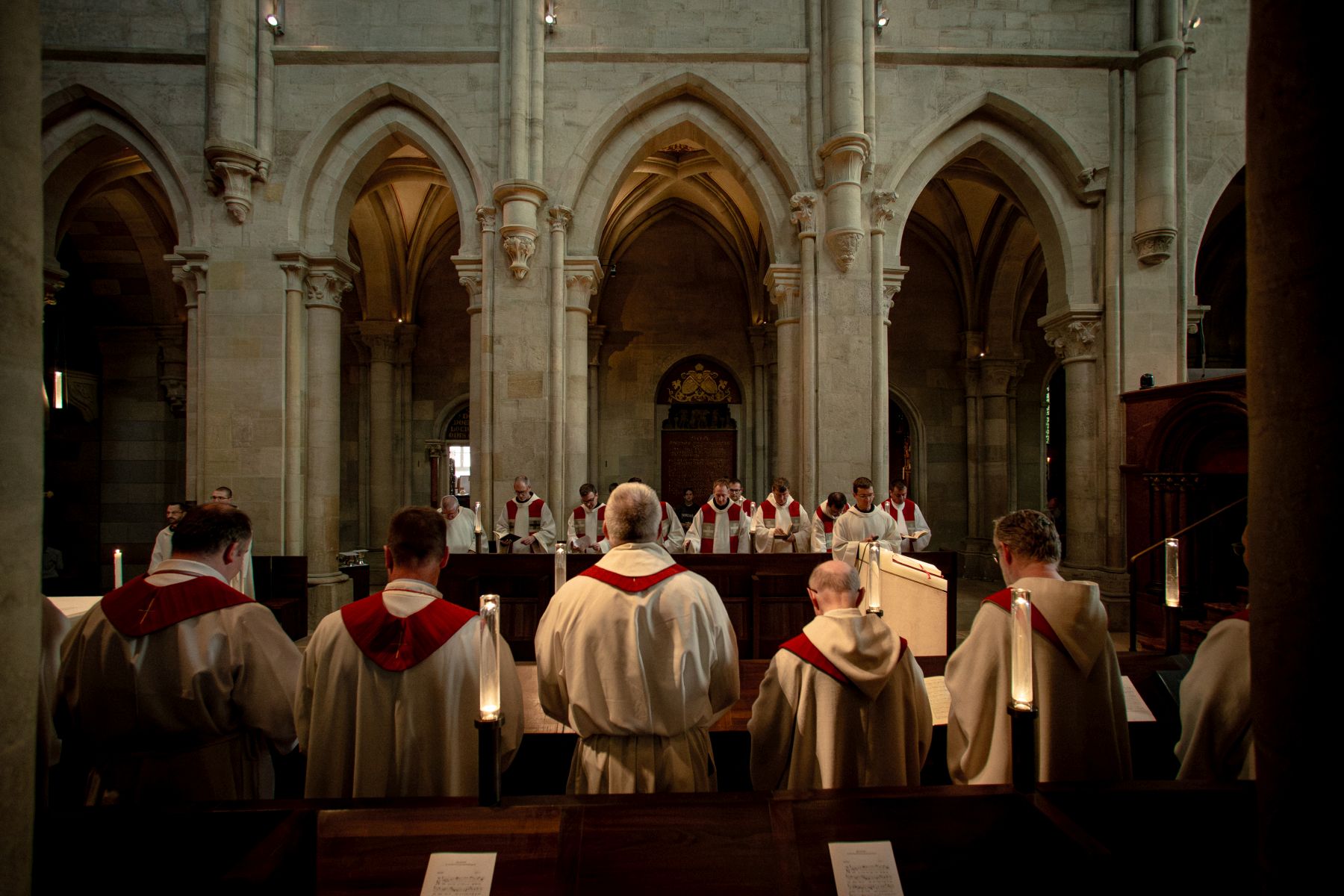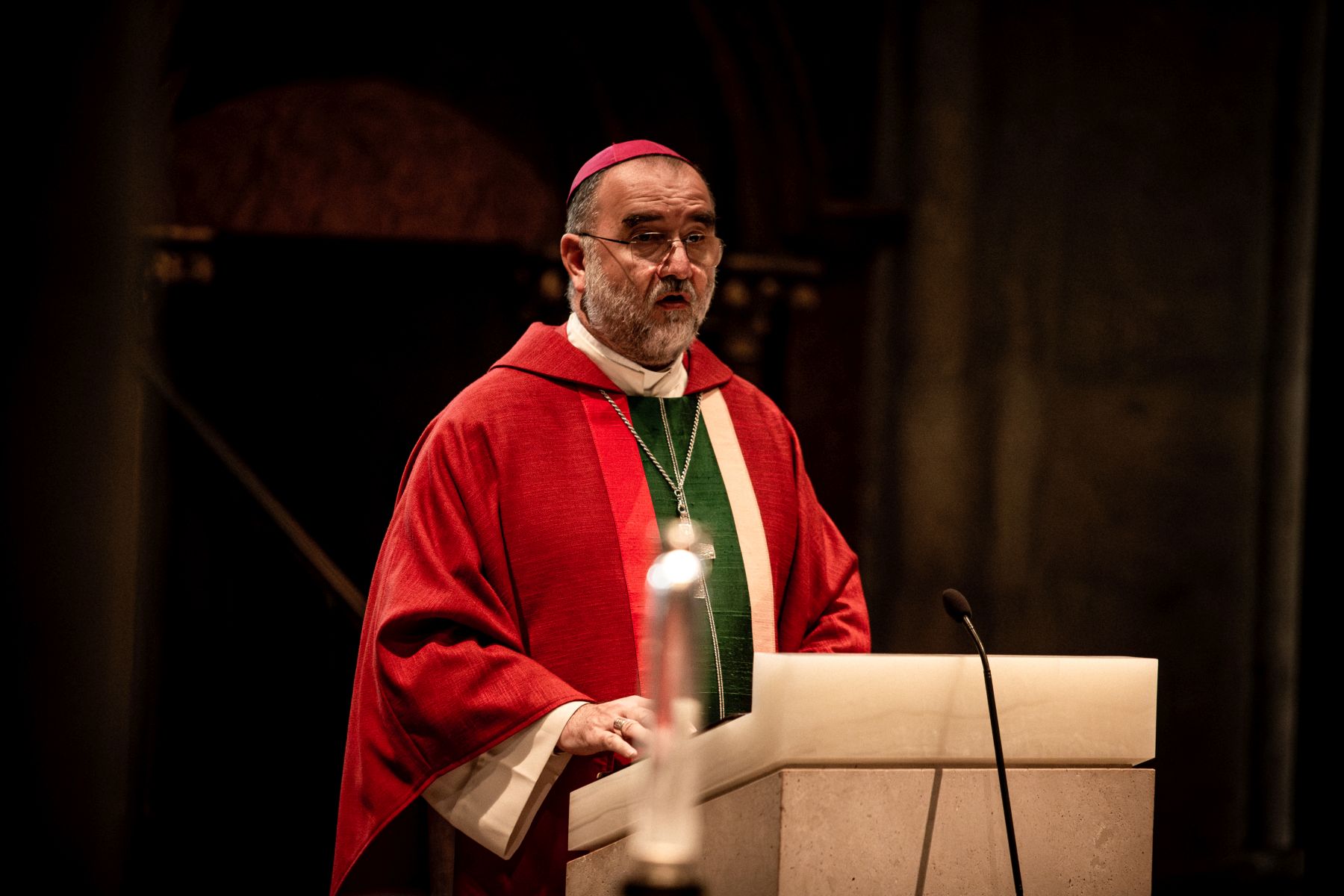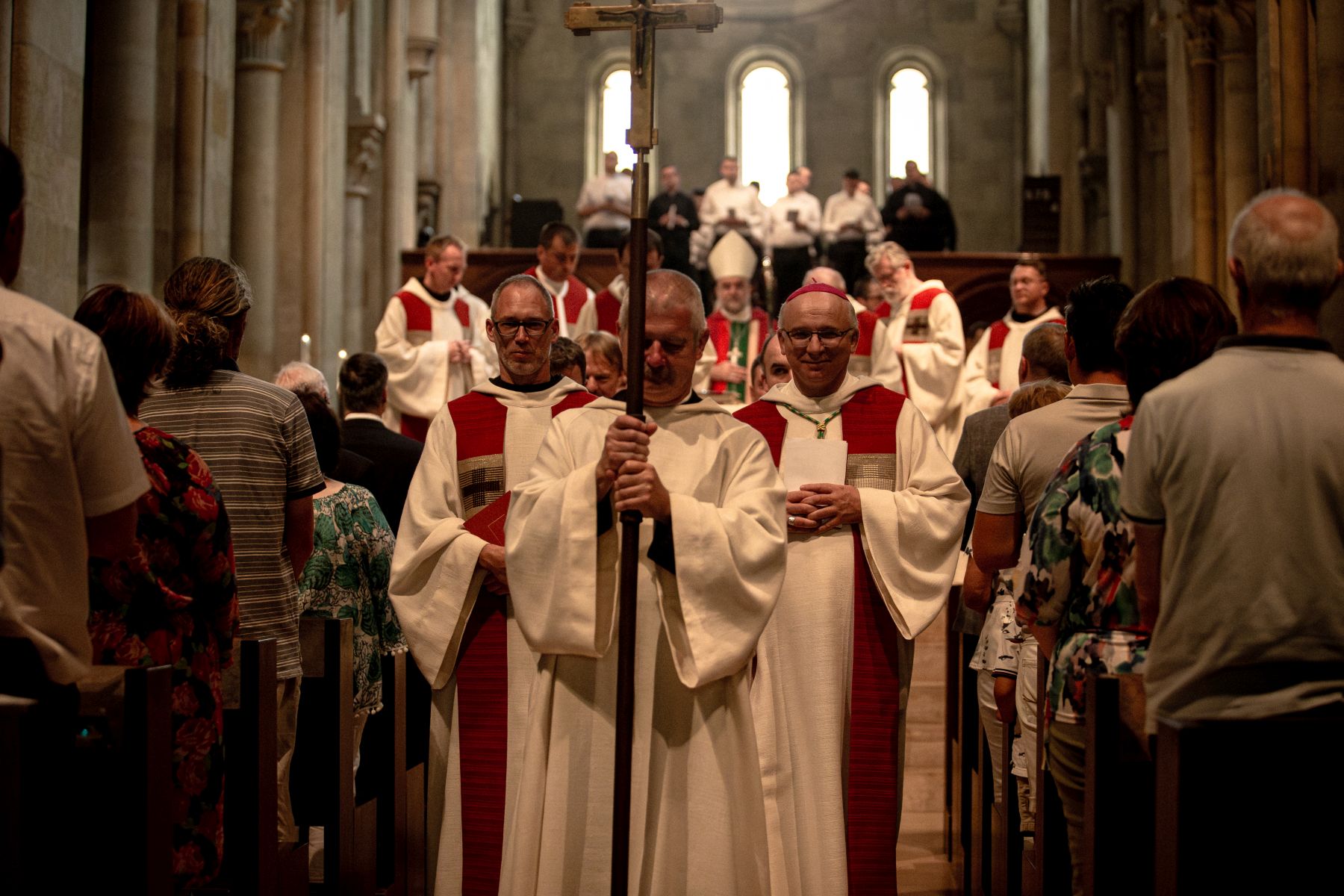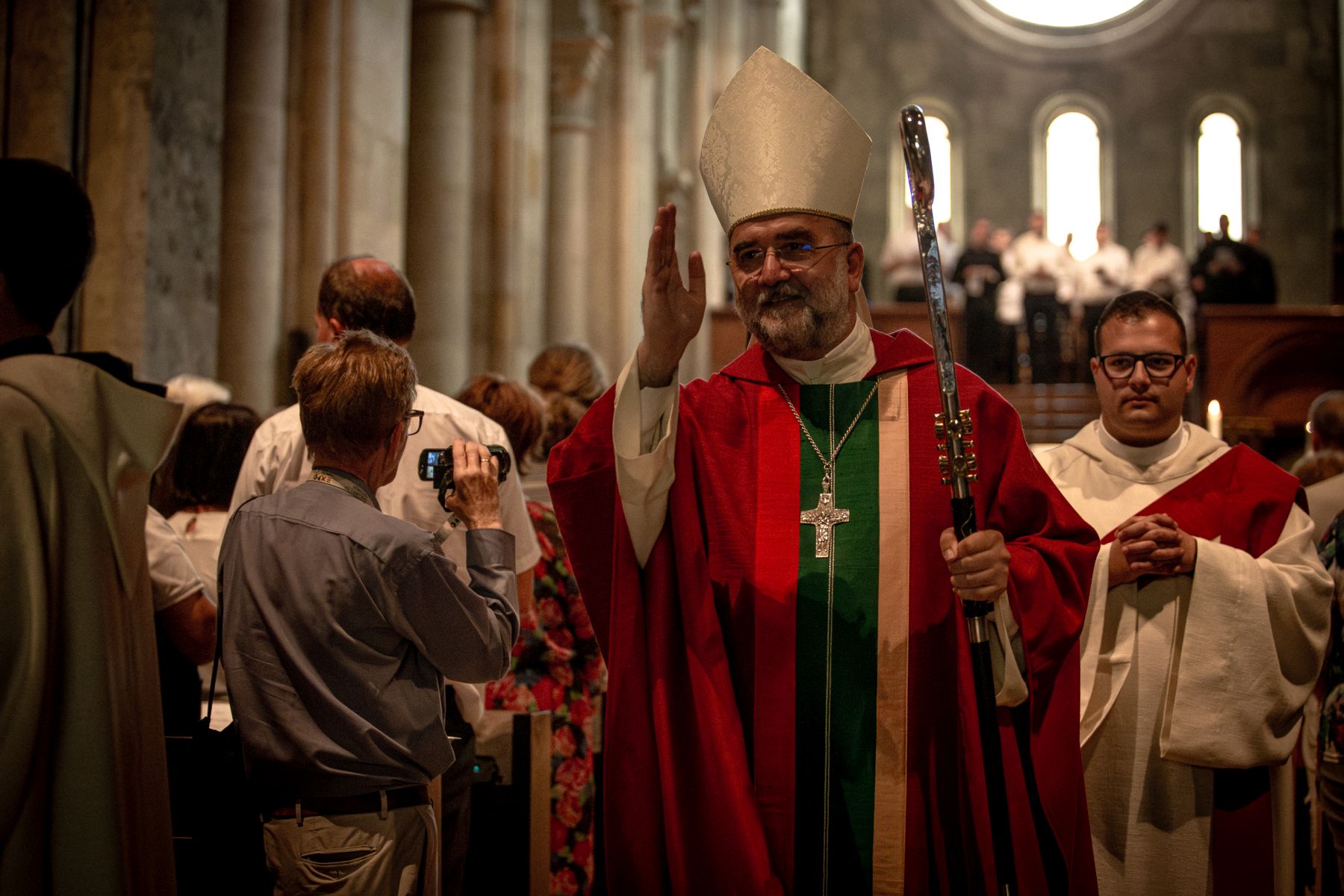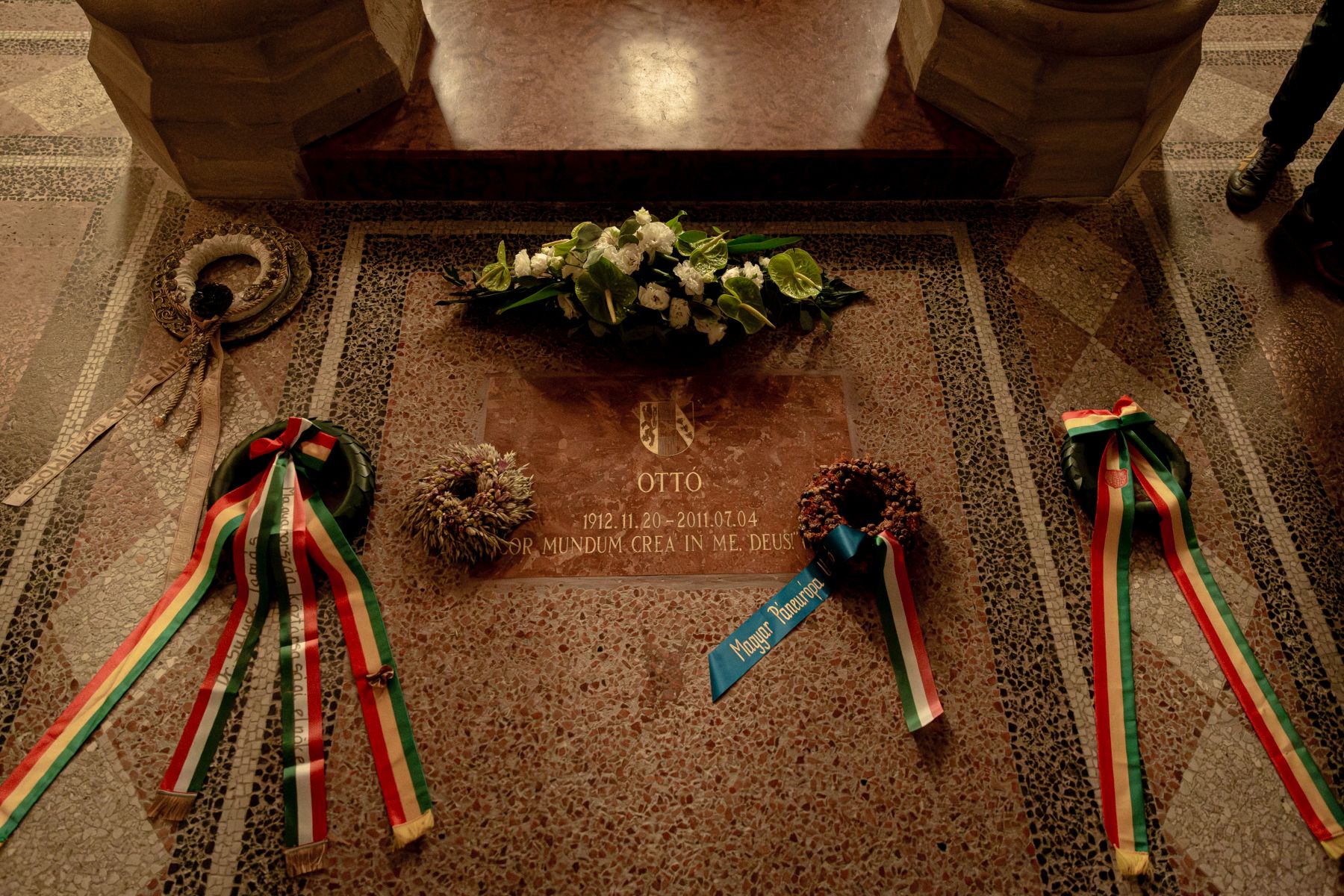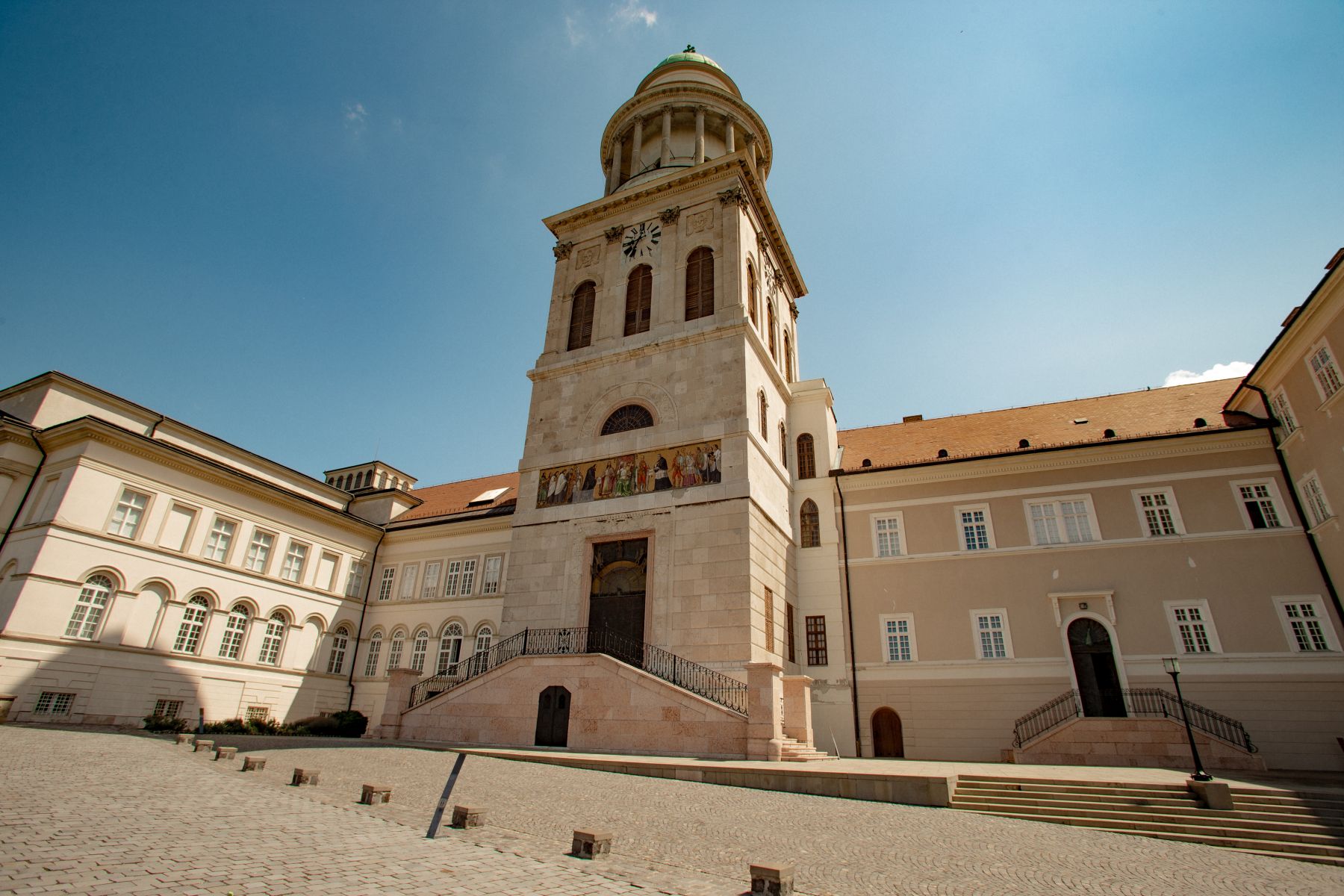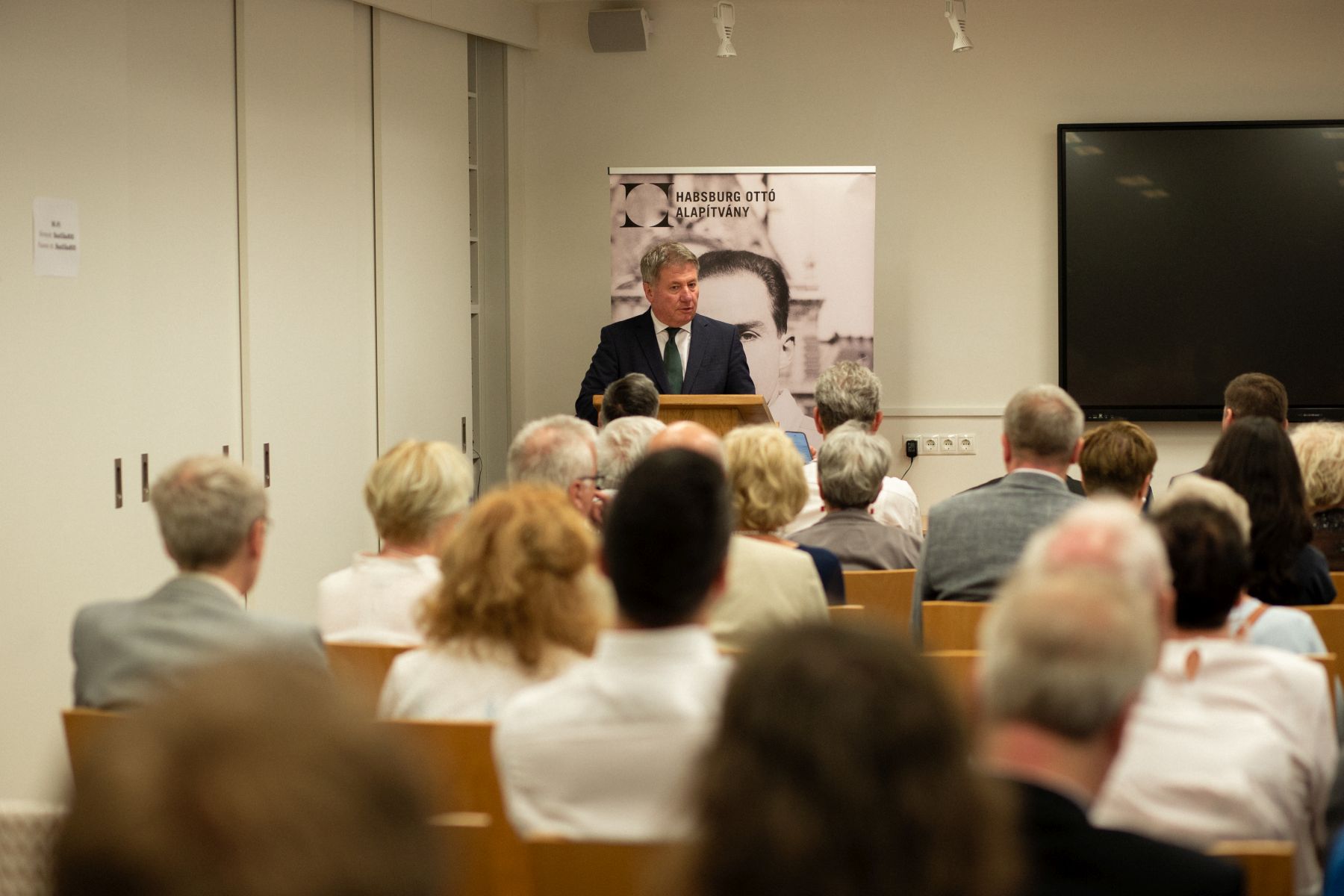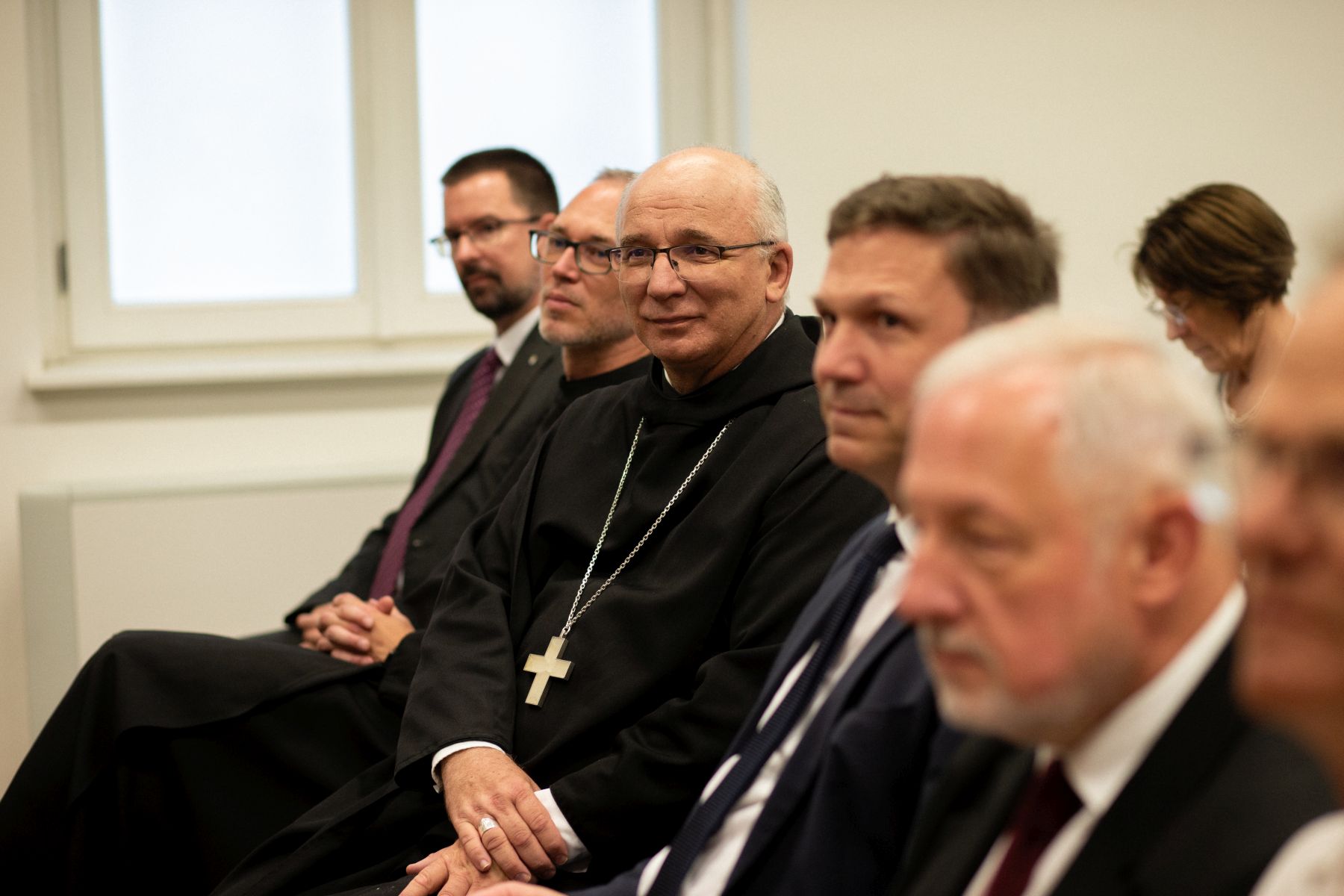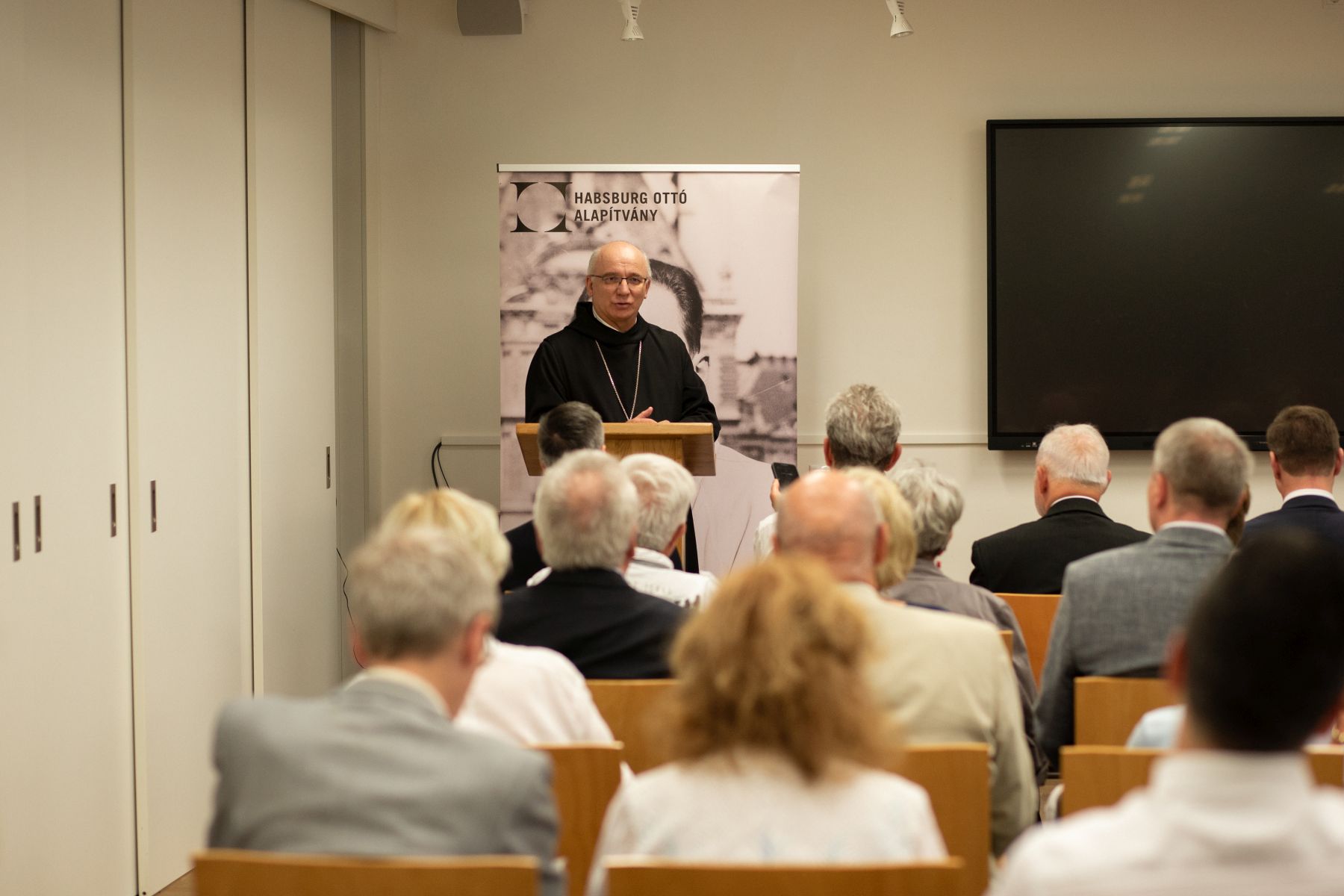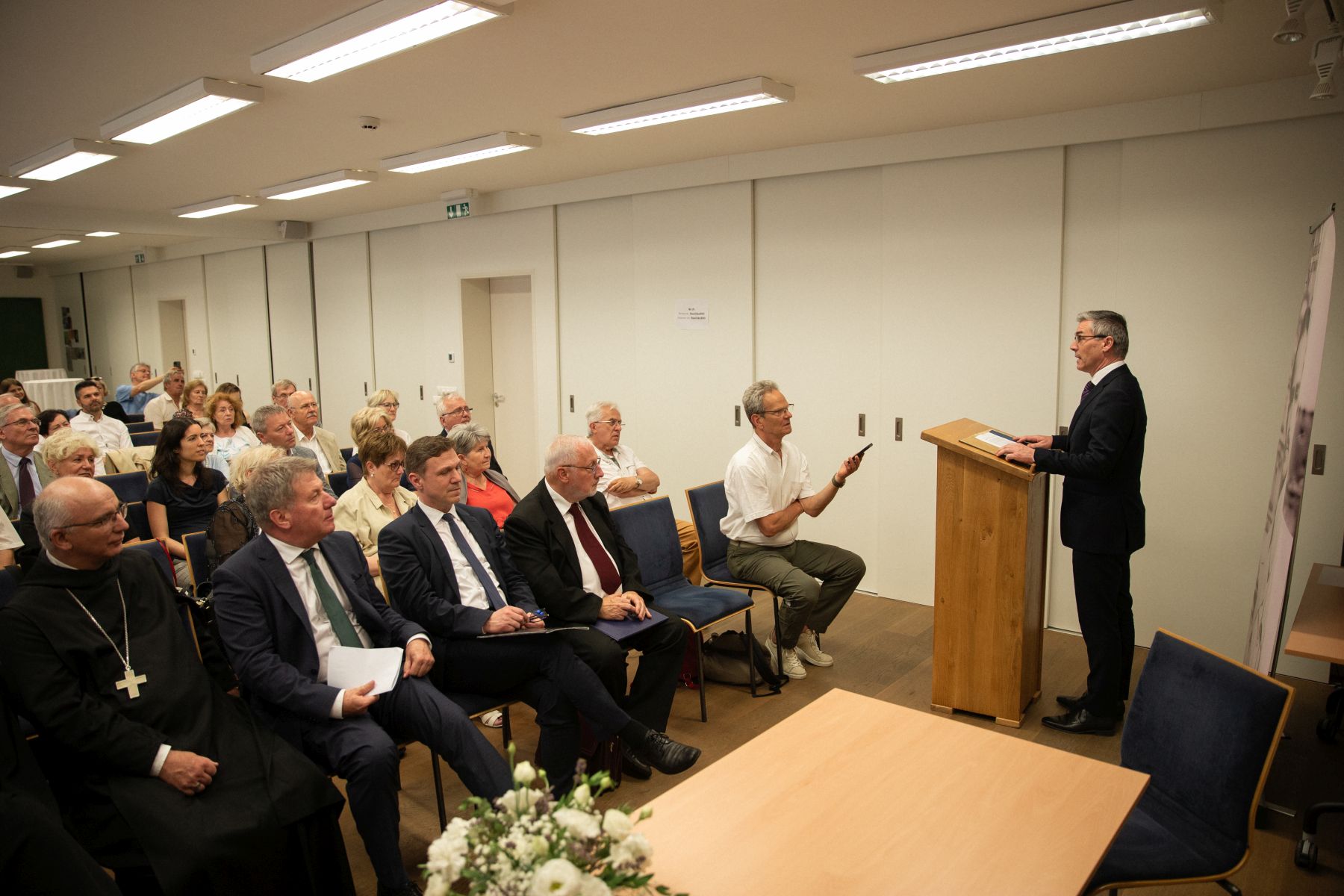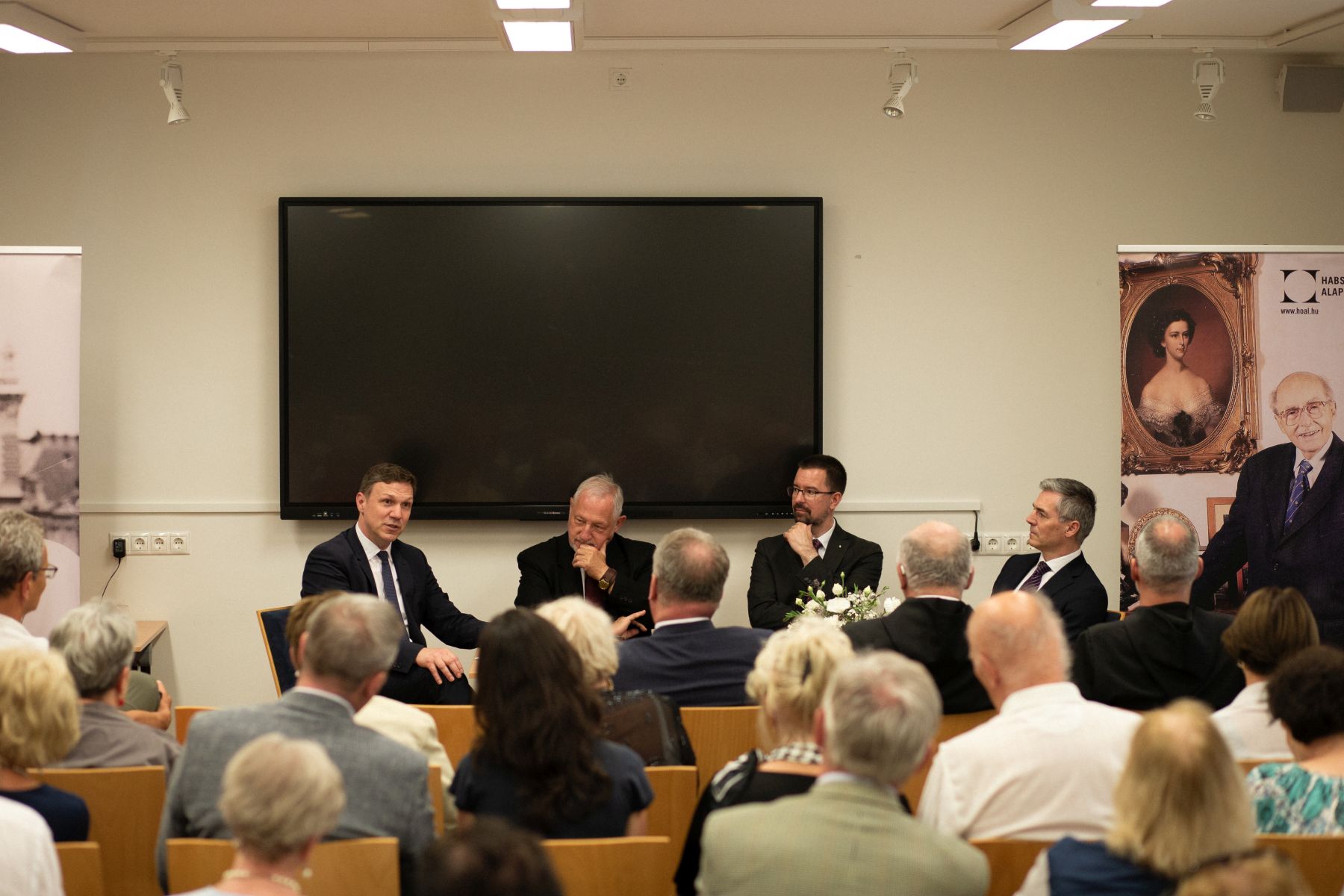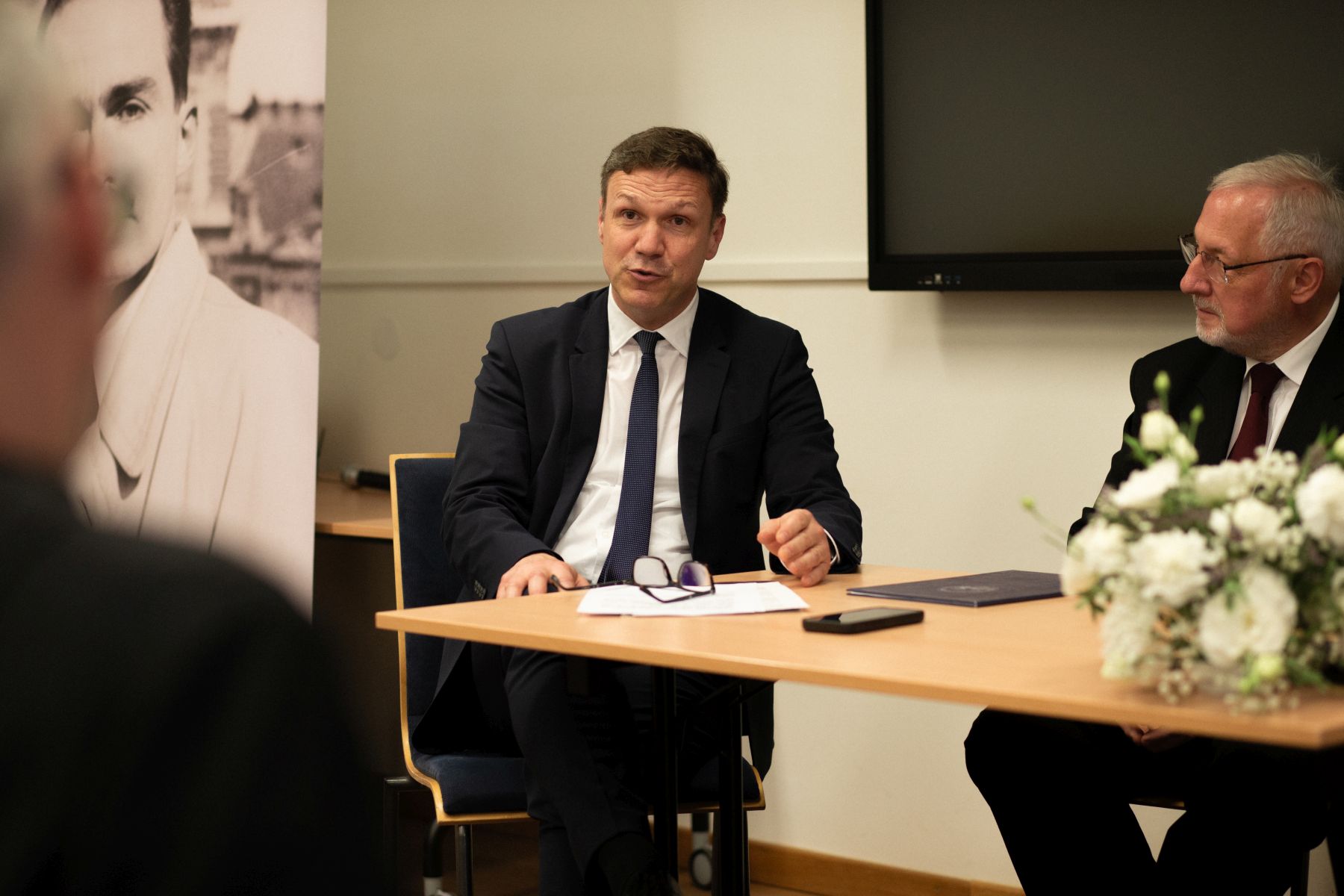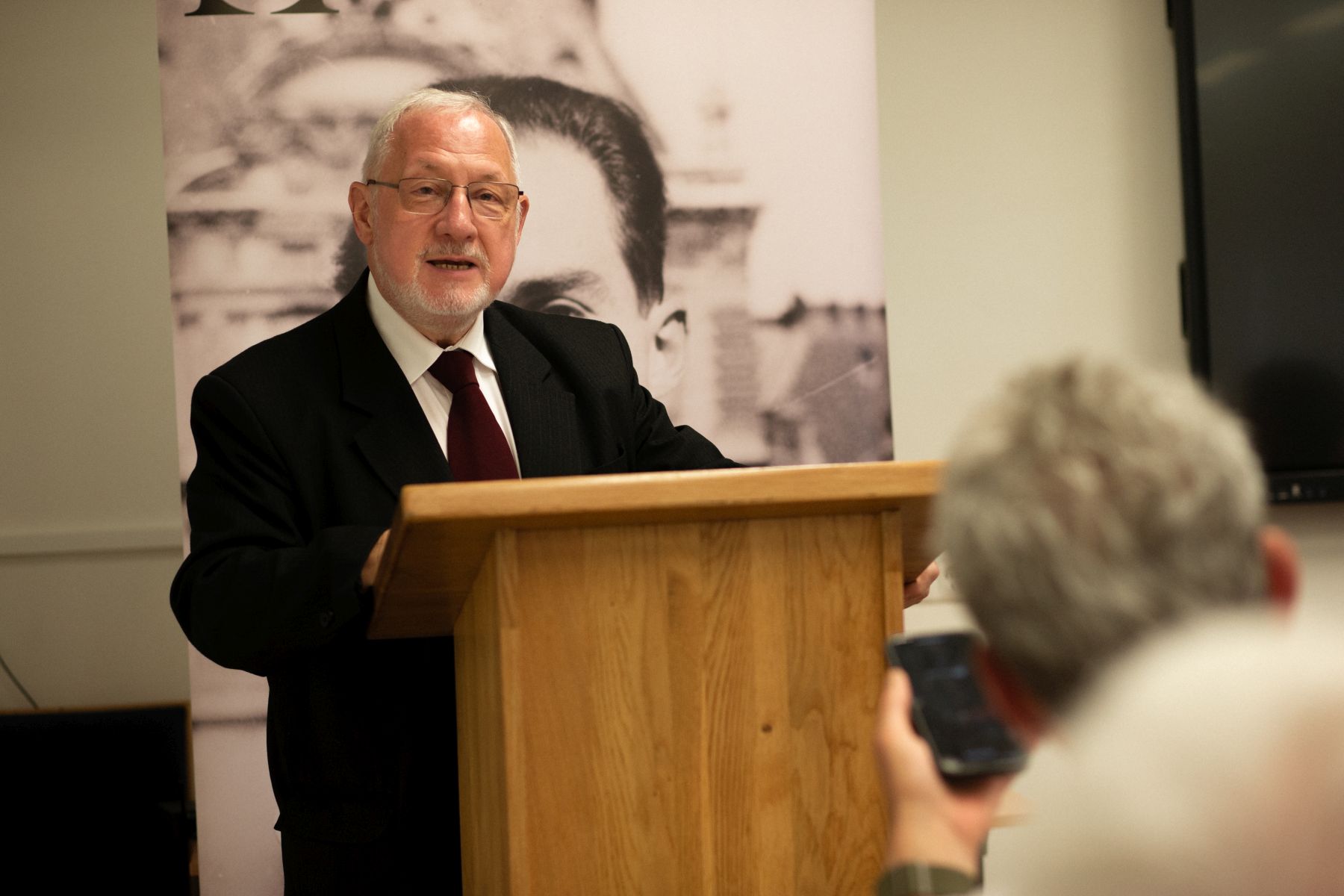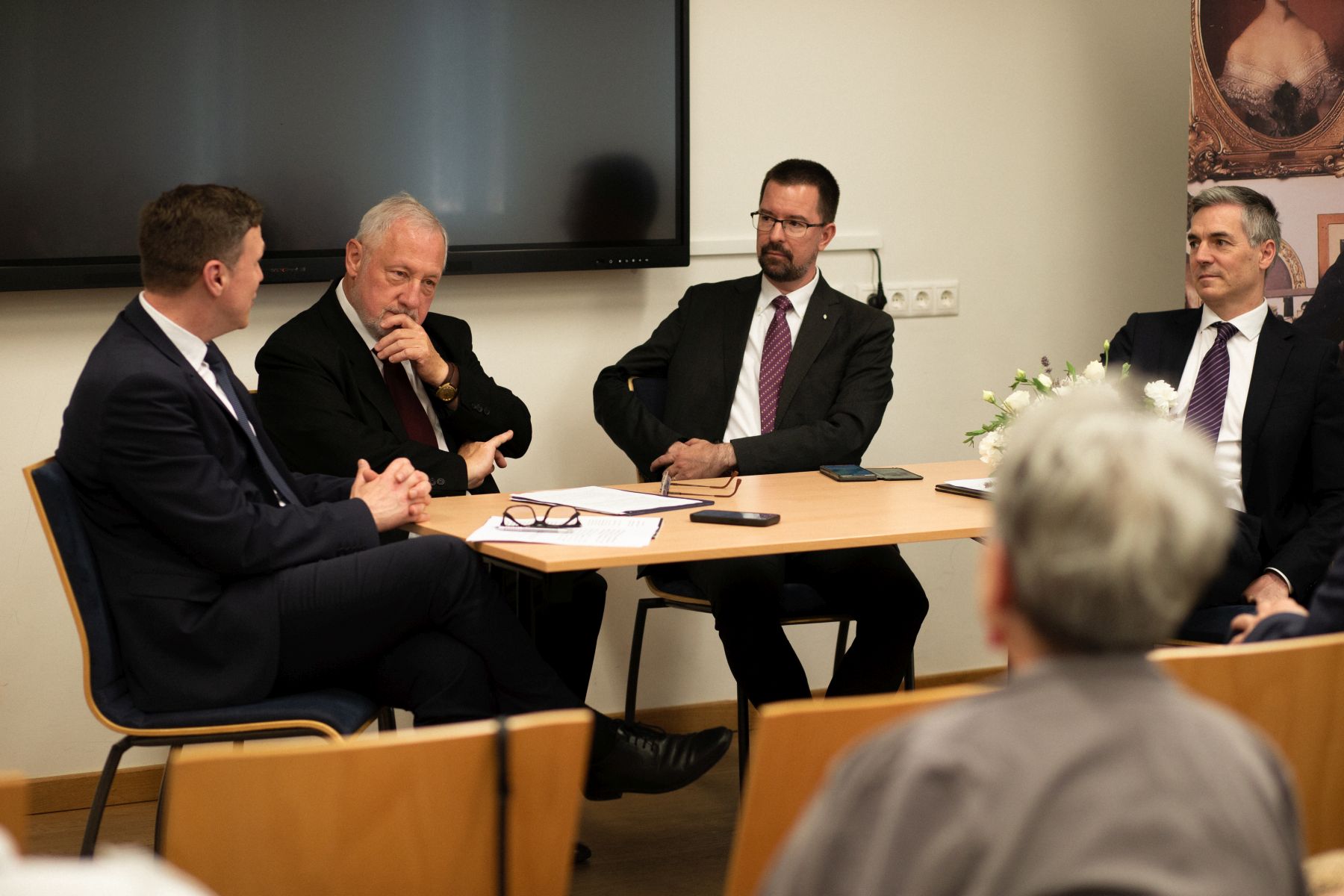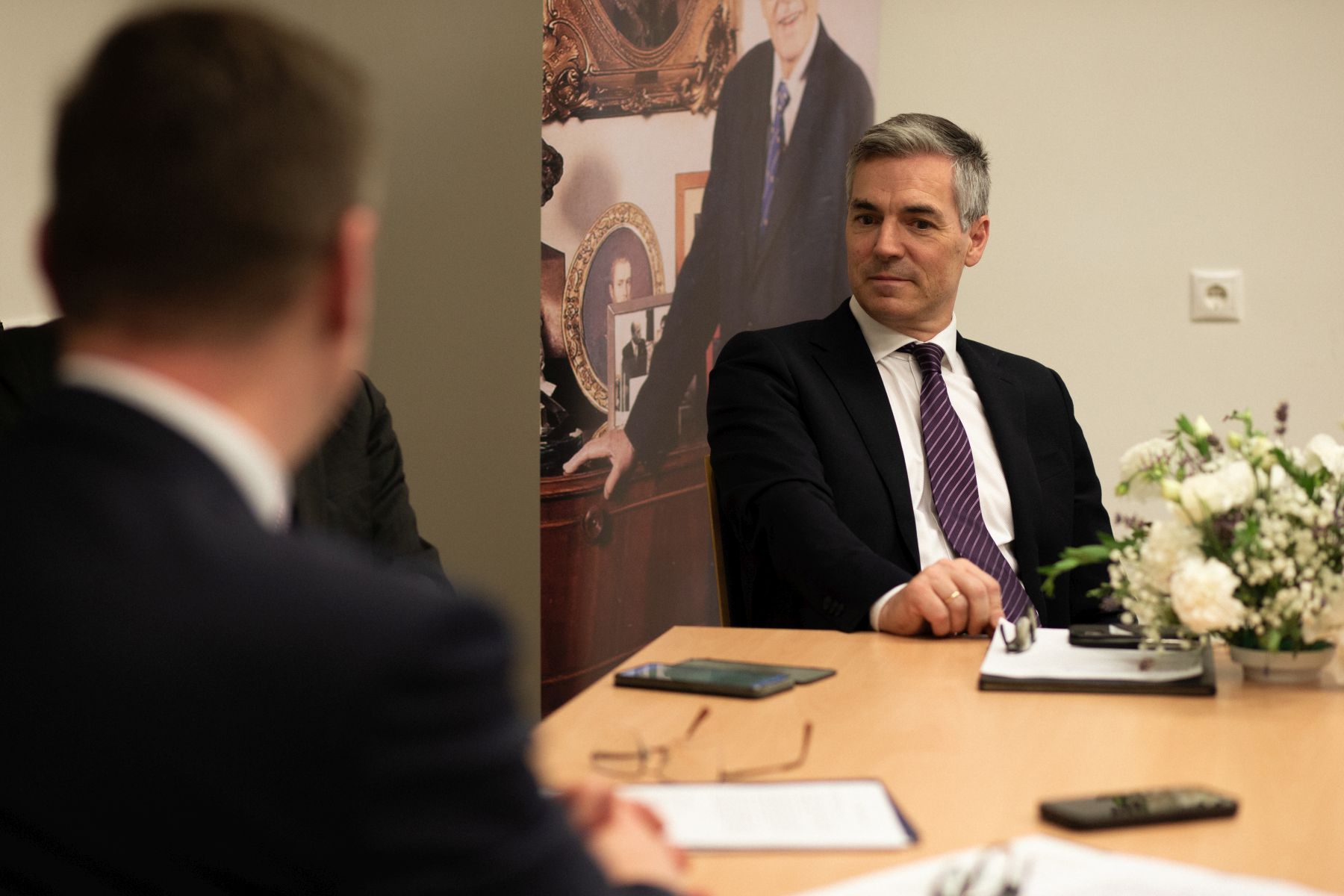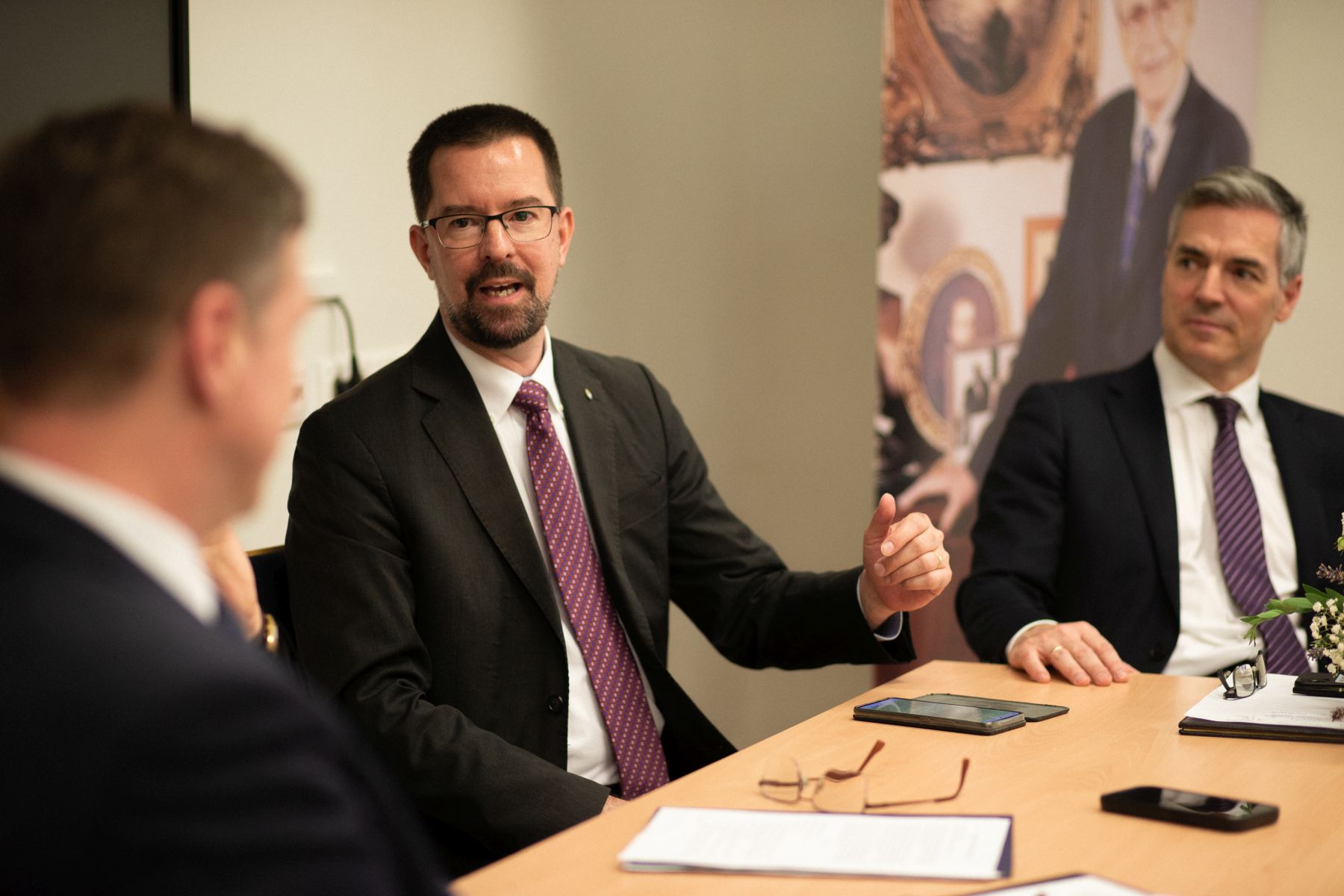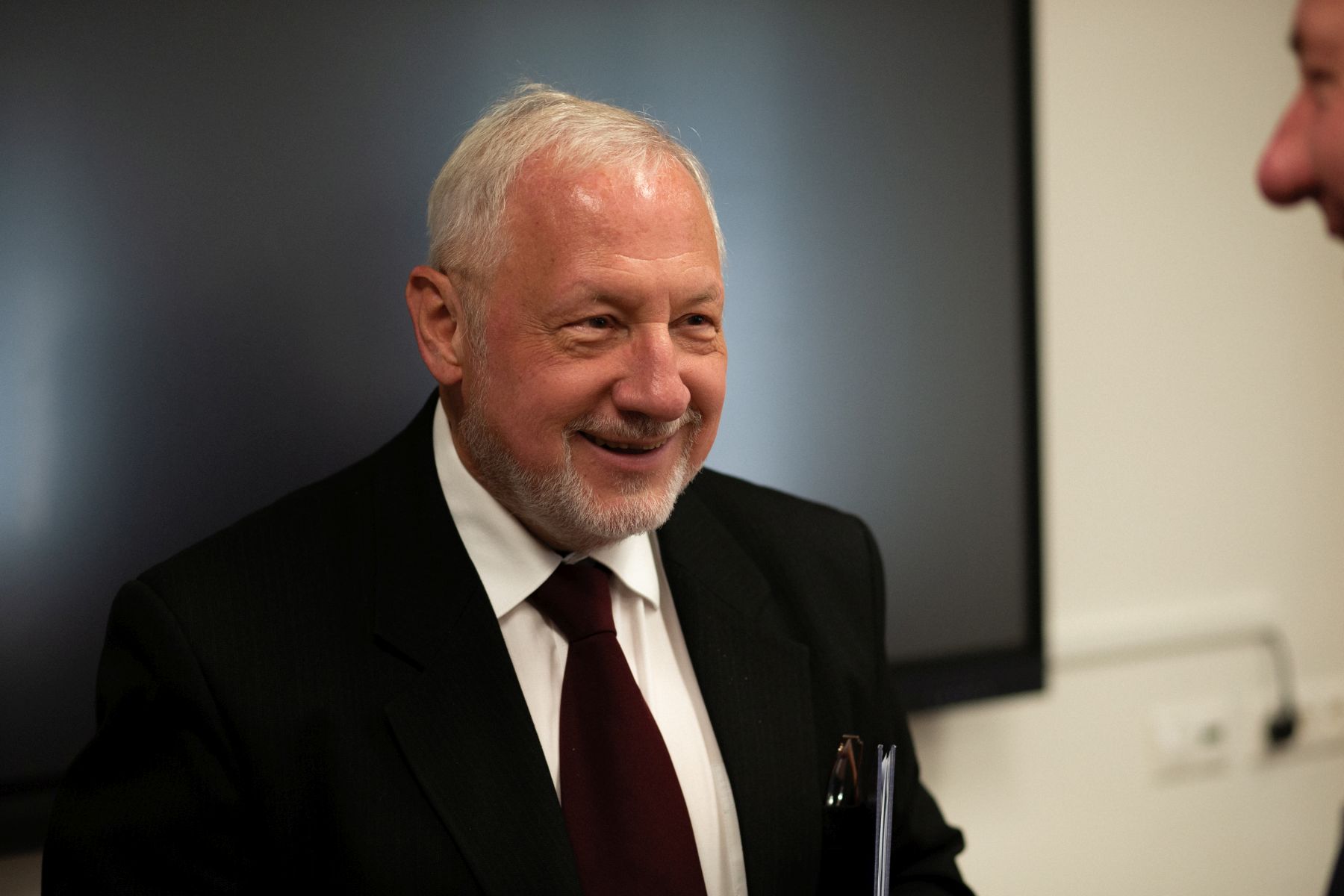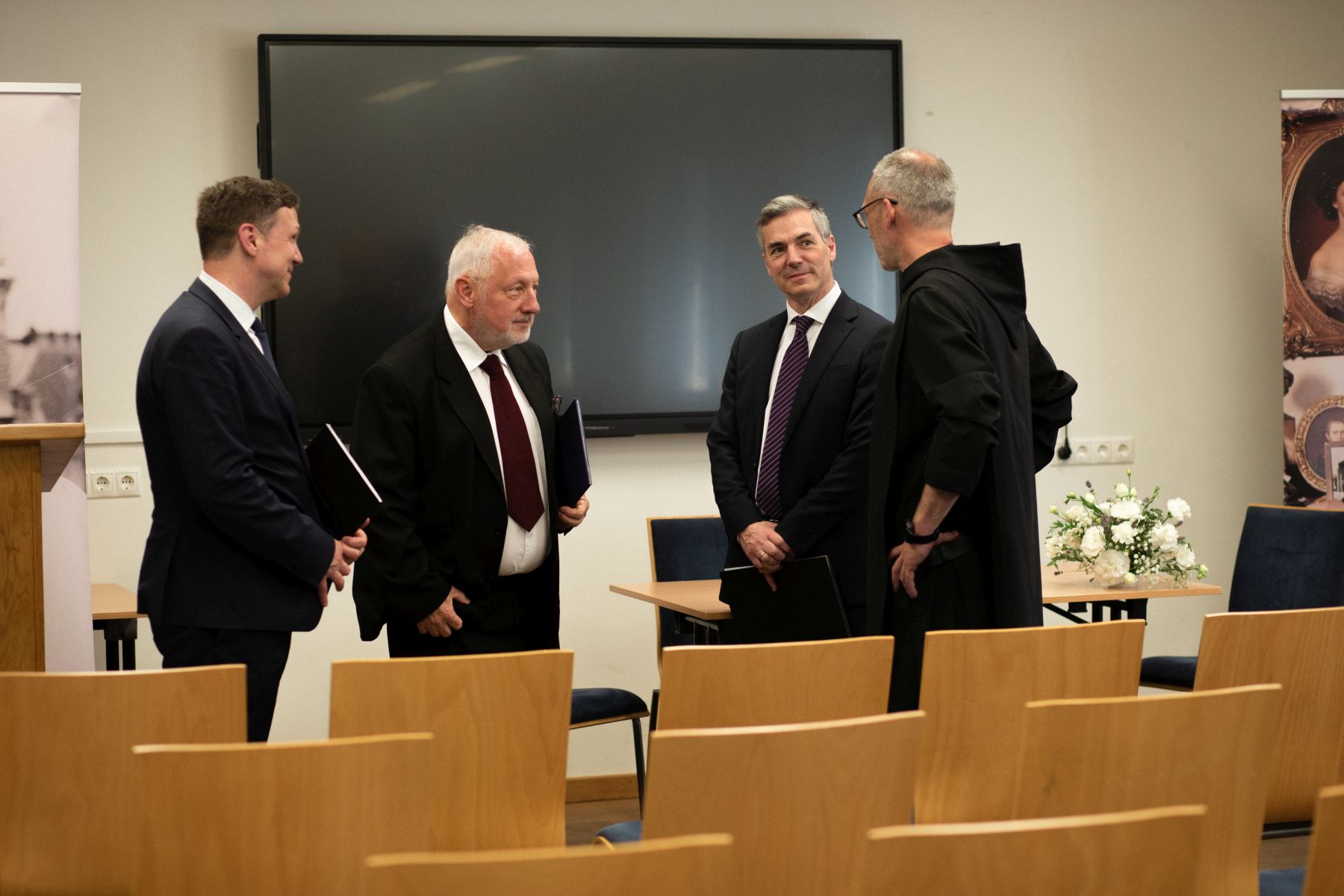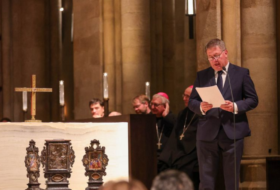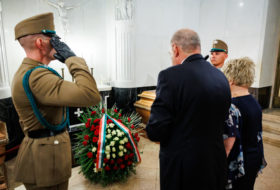This year, the Holy Mass was celebrated by the Archbishop of the Archdiocese of Alba Iulia, Gergely Kovács, on the Day of St. Peter and St. Paul, one of the main feasts of the Catholic Church, who emphasised the importance of confession of faith and Christian testimony through the example of the two apostles, who had different personalities but a common mission.
The conference following the ceremony focused on the Second Vatican Council and its significance for the renewal of the Church. The Synod, one of the most influential events in the Church’s history in the 20th century, which laid new foundations for the Catholic Church’s self-understanding and its relationship with the modern world, was also of crucial importance to Otto von Habsburg.
Gergely Prőhle expressed his gratitude to the Benedictine community of Pannonhalma, which, for Otto von Habsburg, had always been an important place for the renewal of faith and spirit. Echoing the words of the sermon, he emphasised that the Day commemorating the Apostles, Peter and Paul, carries a message of alignment and dialogue between faith and knowledge. Their unity is particularly meaningful on Mount St. Martin, where the Benedictine tradition has always held authentic Christian testimony and spiritual discernment to be inseparable realities that reinforce each other. The Director of our Foundation drew a specific historical parallel with the Council of Nicea, 1700 years ago, which, in its time, was also a strong reflection on the theological and social challenges of the era and contributed significantly to the strengthening of the unity and identity of the Christian world. In conclusion, he quoted Otto von Habsburg, who regarded the involvement of the laity as a substantial achievement of the Council, which the Foundation’s director interpreted as an endeavour similar to Luther’s ideal of the universal priesthood.
Archbishop Cirill Hortobágyi highlighted in his welcome speech that Otto von Habsburg always considered himself a Benedictine student and often referred to the quality of education and upbringing he received at Pannonhalma.
András Fejérdy, Deputy Director of the Institute of History at the HUN-REN Research Center for the Humanities, outlined the context and significance of the Second Vatican Council in the history of the Church. The initiative of Pope John XXIII was a conscious response to the challenges of the times, and in this spirit, the primary aim of the Council – echoing the essence of aggiornamento, which was entwined in the Church leader’s apostolic work – was to promote the development of the Catholic faith and to revive the Christian life of the faithful. After the death of Pope John XXIII, Paul VI carried on the work of the Synod and defined its main objectives: first, to clarify and renew the Church’s identity; second, to restore unity through dialogue with the separated brethren; and finally, to engage in active dialogue with the modern world. The Synodal documents have created a new vision of the Church, based on the traditions of the early Church, have laid the foundations for the development of ecumenical and inter-religious relations, as well as opening the way for further theological dialogue and a rethinking of the Church’s relationship with the world. András Fejérdy explained that the Synod brought about a major paradigm shift in the life of the Church: it is no longer a “fortress under siege”, but a community sensitive and open to the signs of the times, on a pilgrimage together with modern society. The historian also described in detail the role of the Secretariat of Christian Unity, founded by Pope John XXIII in 1960. This body facilitated contacts between different Christian communities while playing an essential role in the adoption of a new theological and methodological approach. In his closing remarks, the historian also elaborated on how the reforms and initiatives launched by the synod can be understood in the light of the political constraints of the socialist bloc and the Cold War, and how these shaped the experience and interpretation of the Synod in Hungary.
The discussion following the keynote speech was moderated by Gergely Fejérdy, Deputy Director of our Foundation. Otto von Habsburg attended the opening session of the Second Vatican Council in October 1962 at the personal invitation of Pope John XXIII, and in his later writings and public speeches he regularly accentuated the significance of the synodal teaching and the spirit of the three-year-long deliberations, the deputy director recalled, and invited the participants to reflect on the legacy of the Council, especially in the light of the role of the Church in society and the current dynamics of dialogues.
Károly Hafenscher, a professor at the Evangelical-Lutheran Theological University, pointed out that the Second Vatican Council not only renewed the Catholic Church but also fostered ecumenical dialogue. “I grew up in a family where the teaching of the Synod was a living reality: it gave me perspective, it taught me openness and helped me to see ecumenism not just as a theoretical construct but as a daily practice.” The spirit of the Synod was built on the idea of semper reformanda – the constant renewal of the Church – which is quite pivotal to Protestants, and which preserved fidelity to Christ while leaving the Church open to change. It held particular importance how the dogmatic constitution of the Second Vatican Council put the inseparable unity of Word and Sacrament in a new light. And through the affirmation of the centrality of the Word and Scripture, the liturgical and theological practice of the Catholic Church has, in many ways, moved closer to the evangelical tradition, which in turn has been a defining step towards mutual understanding and spiritual unity among Christians. In the view of Protestants, it was also crucial that the Council made clear that the central doctrine of justification by grace through faith was the theological priority. According to the Lutheran pastor, the reform of the ritual order of the Roman Mass also brought about an ecumenical rapprochement and a specific reflexivity, as the Lutheran Church was given new impulses to rediscover its own liturgical heritage.
Márk Érszegi, a diplomat and Vatican expert, provided a comprehensive summary of the decisions and the essence of the Synod, noting that although many of the reforms aimed at renewing the Church have been implemented, they have not yet reached their full potential. In contemplation of the challenges of the present day, it is appropriate to reflect on these reforms and to seek new directions and approaches for the development of the Church. He stressed that one of the fruits of the Synod was the 1983 Code of Canon Law, which was drafted under Pope John Paul II and serves as a legal expression of the spirit of the Synod. The Catechism of the Catholic Church and liturgical reform were also important elements of the renewal. In Hungary, the new ritual order ensured a sense of belonging to the universal Church, even behind the Iron Curtain, which was of great importance during the communist period. At the same time, however, theological unity – partly due to ideological divisions during the Cold War and partly due to local particularities – was not fully achieved even after the Council, so the renewal of the Church still faces challenges in certain areas. The diplomat, therefore, believes it is vital that the Church does not consider the process of renewal launched by the Synod as complete, but continues to pursue it in line with changing social and cultural challenges.
The participants of the round table agreed on the significance of the processes initiated by the synod and that the diversity of their interpretation and the unity aspired to by the ethos of the council can be felt in Pannonhalma in an exceptionally beautiful way.
